
How to Use RTC-DS1302: Examples, Pinouts, and Specs
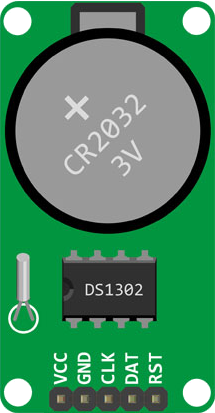
 Design with RTC-DS1302 in Cirkit Designer
Design with RTC-DS1302 in Cirkit DesignerIntroduction
The RTC-DS1302 is a real-time clock (RTC) module that provides accurate timekeeping capabilities. It is equipped with an integrated circuit (IC) DS1302 which communicates via a simple serial interface. The module includes a small coin cell battery that maintains the time when the main power is off. Common applications include clocks, data loggers, timers, and other devices that require an accurate time reference.
Explore Projects Built with RTC-DS1302
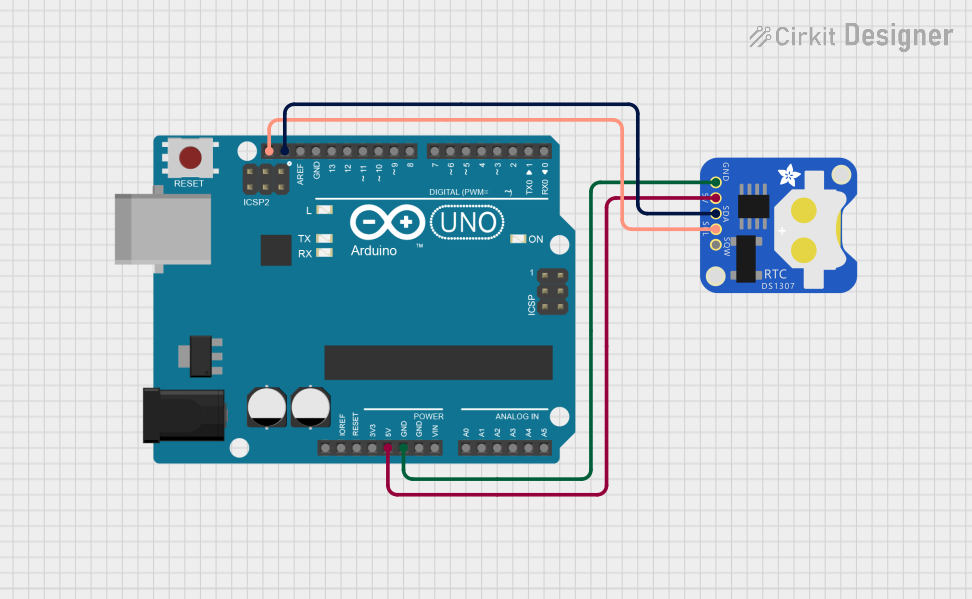
 Open Project in Cirkit Designer
Open Project in Cirkit Designer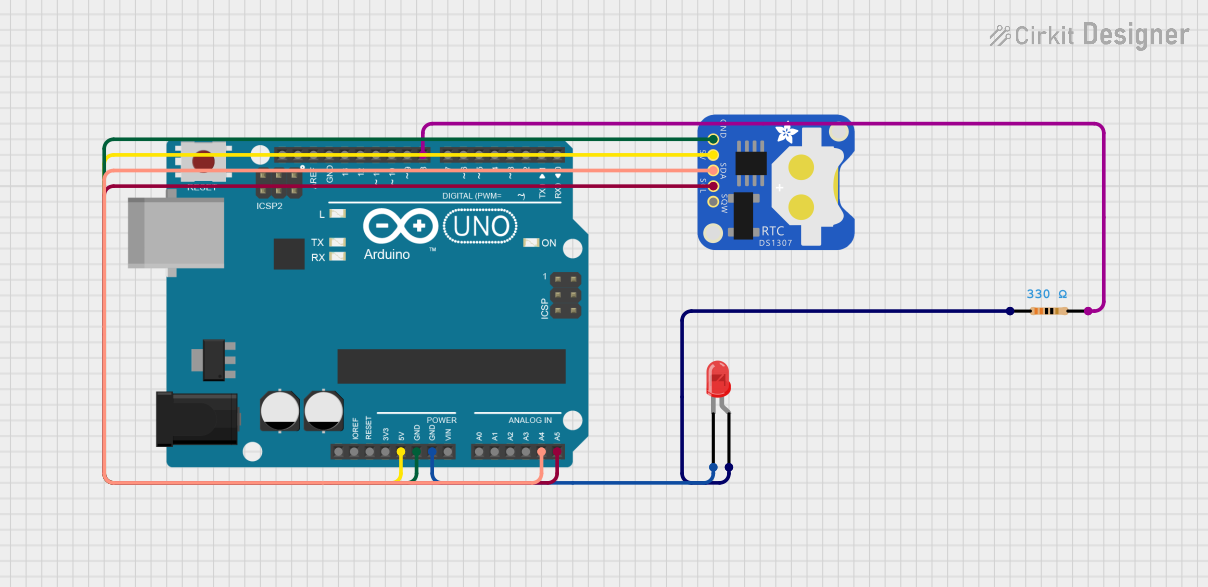
 Open Project in Cirkit Designer
Open Project in Cirkit Designer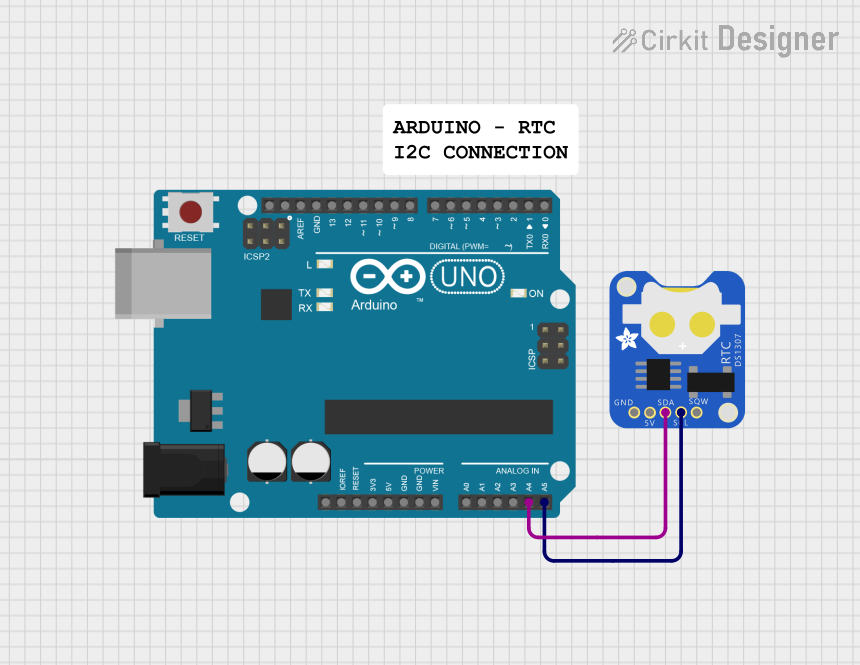
 Open Project in Cirkit Designer
Open Project in Cirkit Designer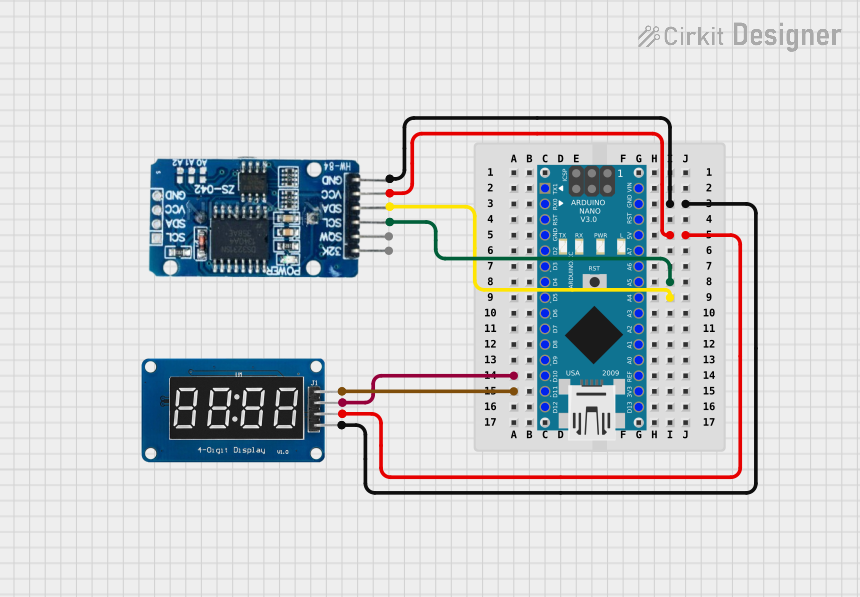
 Open Project in Cirkit Designer
Open Project in Cirkit DesignerExplore Projects Built with RTC-DS1302

 Open Project in Cirkit Designer
Open Project in Cirkit Designer
 Open Project in Cirkit Designer
Open Project in Cirkit Designer
 Open Project in Cirkit Designer
Open Project in Cirkit Designer
 Open Project in Cirkit Designer
Open Project in Cirkit DesignerTechnical Specifications
Key Technical Details
- Timekeeping Accuracy: ±2 minutes/month at 25°C
- Operating Voltage: 2.0V to 5.5V
- Battery Backup Voltage: 1.3V to 5.5V
- Operating Current: 2mA (max)
- Battery Current: 300nA (typical)
- Operating Temperature: 0°C to +70°C
- Interface: Serial (Simple 3-wire interface)
Pin Configuration and Descriptions
| Pin Number | Name | Description |
|---|---|---|
| 1 | VCC | Power supply (2.0V to 5.5V) |
| 2 | GND | Ground |
| 3 | CLK | Clock input for serial interface |
| 4 | DAT | Data input/output for serial interface |
| 5 | RST | Reset input for serial interface |
| 6 | NC | Not connected |
| 7 | NC | Not connected |
| 8 | BAT | Battery input for backup |
Usage Instructions
Interfacing with a Circuit
- Power Connections: Connect VCC to a 2.0V to 5.5V power supply and GND to the ground.
- Serial Interface: Connect CLK, DAT, and RST to the microcontroller's digital pins.
- Battery Backup: Install a coin cell battery to the BAT pin to maintain timekeeping during power loss.
Important Considerations and Best Practices
- Ensure that the power supply voltage does not exceed 5.5V to prevent damage.
- The battery should be installed correctly with the positive side facing up.
- Use pull-up resistors on the data line if required by the microcontroller.
- Avoid placing the module near heat sources or in environments with high humidity.
Example Code for Arduino UNO
#include <DS1302.h>
// Initialize the DS1302
// RST pin, DAT pin, CLK pin
DS1302 rtc(7, 6, 5);
void setup() {
// Set the clock to run-mode, and disable the write protection
rtc.halt(false);
rtc.writeProtect(false);
// Setup Serial connection
Serial.begin(9600);
// The following lines can be uncommented to set the date and time
// rtc.setDOW(FRIDAY); // Set Day-of-Week to FRIDAY
// rtc.setTime(12, 0, 0); // Set the time to 12:00:00 (24hr format)
// rtc.setDate(6, 8, 2010); // Set the date to August 6th, 2010
}
void loop() {
// Get the current time and date from the RTC
Serial.print(rtc.getDOWStr());
Serial.print(" ");
// Print the time
Serial.print(rtc.getTimeStr());
Serial.print(" -- ");
// Print the date
Serial.println(rtc.getDateStr());
// Wait one second before repeating :)
delay (1000);
}
Troubleshooting and FAQs
Common Issues
- Time not accurate: Ensure the battery is installed correctly and has charge.
- Module not responding: Check the wiring, especially the serial interface connections.
- Time resets on power cycle: Verify that the battery is present and functioning.
Solutions and Tips for Troubleshooting
- Double-check the connections and ensure that the correct pins are used.
- Replace the battery if the module fails to keep time after power is removed.
- If using long wires, ensure they are securely connected and consider using shielded cables to reduce noise.
FAQs
Q: Can the RTC-DS1302 be used in low-power applications? A: Yes, the RTC-DS1302 has a low-power consumption mode and can be used in battery-powered applications.
Q: How do I set the time on the RTC-DS1302?
A: You can set the time by using the rtc.setTime() function in your code, as shown in the example above.
Q: What is the lifespan of the battery? A: The lifespan of the battery depends on the quality and type of battery used, but typically it can last for several years.
Q: Does the RTC-DS1302 account for leap years? A: Yes, the DS1302 chip has an automatic leap year compensation valid up to the year 2100.
Q: Can I use the RTC-DS1302 with other microcontrollers besides Arduino? A: Yes, the RTC-DS1302 can be interfaced with any microcontroller that supports a serial interface. Adjustments to the code may be necessary for different platforms.